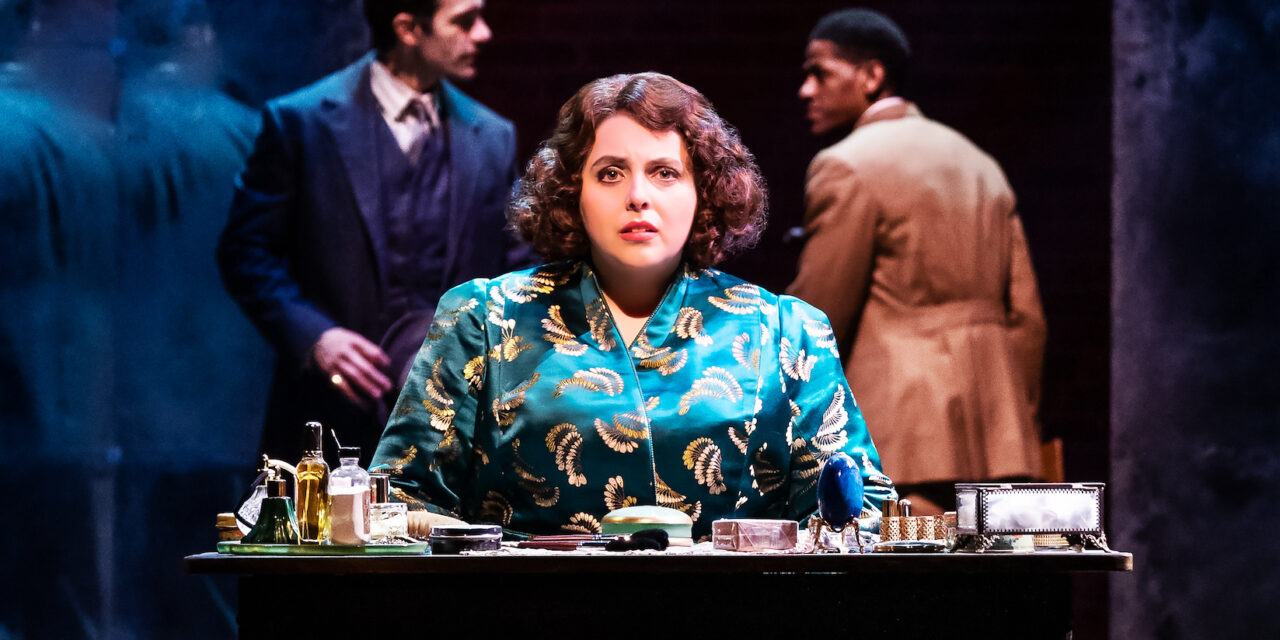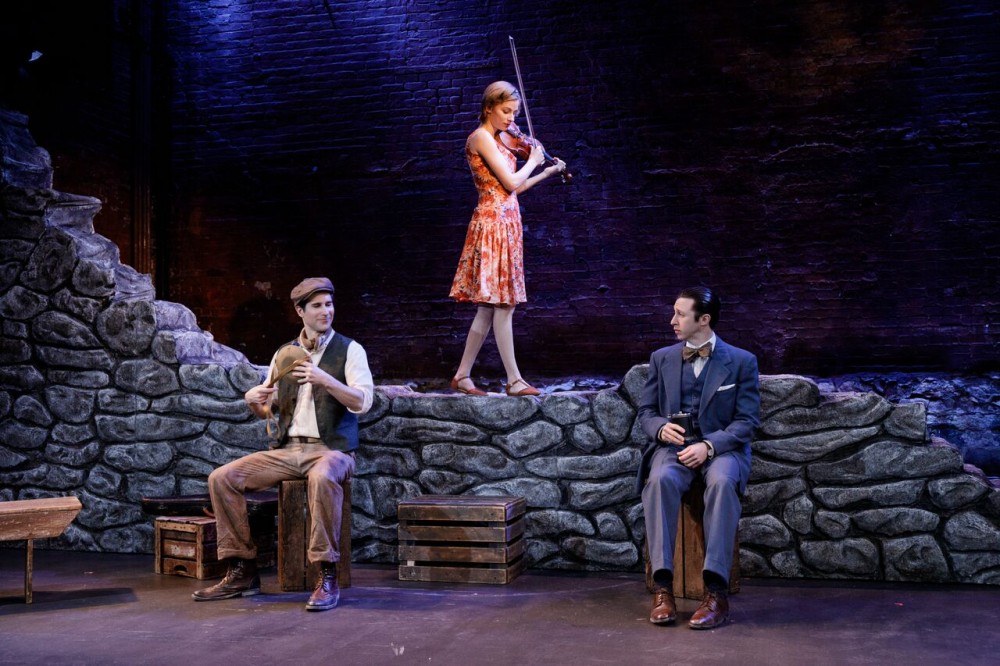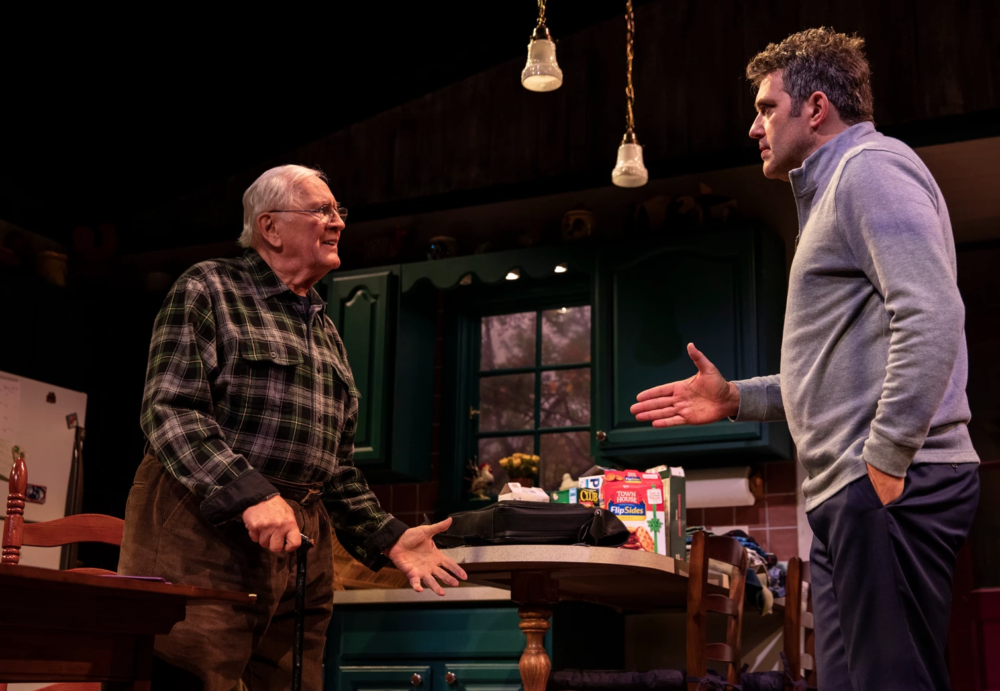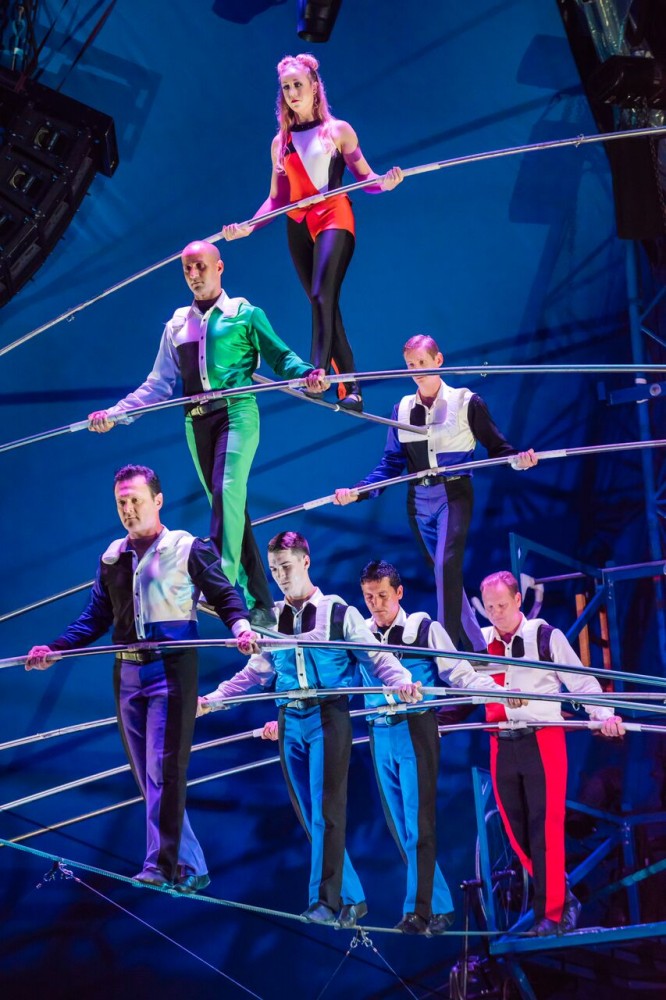By Samuel L. Leiter . . .
Barbra Streisand was a relatively unknown 21-year-old singer in 1964 when she exploded into Broadway superstardom as Manhattan-born vaudeville comedienne Fania Borach, I mean Fanny Brice (1891-1951), her stage name, in the hit bio-musical Funny Girl. So perfect was she for the character, and so organically right for her extraordinary voice were Jule Styne’s music and Bob Merrill’s lyrics, that it has taken nearly 60 years to find someone deemed capable of matching her (as indelibly preserved on the cast album and film) in a Broadway revival. It wasn’t until 2015 that a major revival anywhere was produced, with Sheridan Smith scoring a bullseye in a sold-out London staging, directed by Michal Mayer, with a revised version of Isobel Lennart’s original book by Harvey Fierstein.
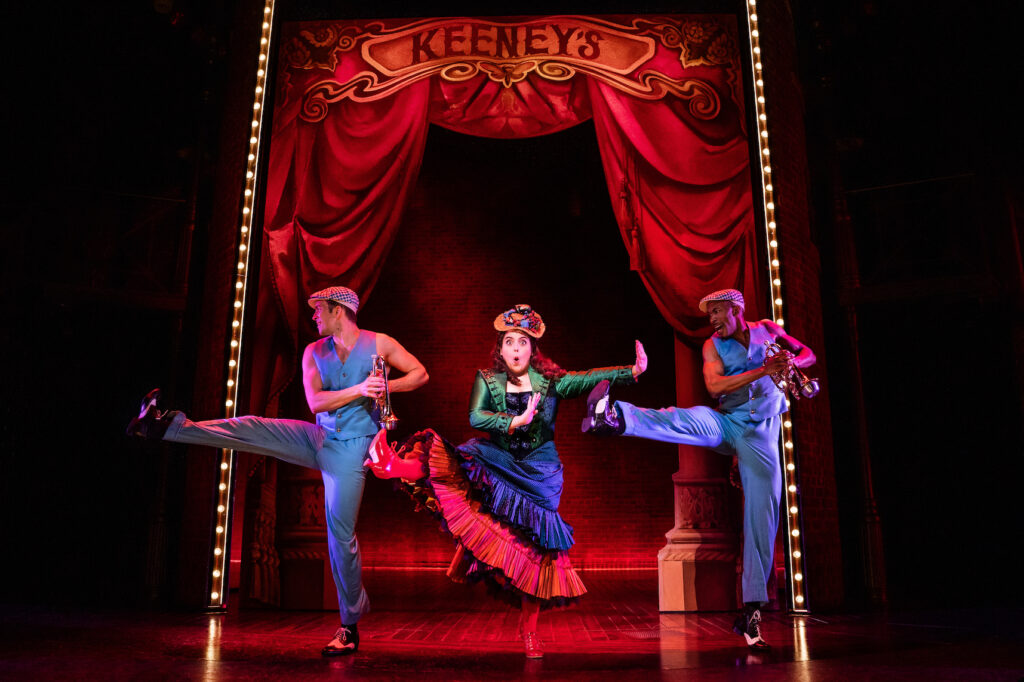
Broadway now has its long-awaited revival, starring Beanie Feldstein, a rising 28-year-old actress, whose sole Broadway credit was the supporting role of Minnie Fay in the 2017 Bette Midler revival of Hello, Dolly! Before Funny Girl, Ms. Streisand also had only a single, supporting role on Broadway, although it stole the show. The comparison stops there as Ms. Feldstein’s performance has met with a raft of reviews running mostly from tepidly supportive to coldly denying. Many noted, on the one hand, her combination of warmth, comedic, and thespian skills, but most also declared her voice not up to the score’s demands.
Word even spread that her far less well-known standby (not understudy), Julie Benko, who took over for the star several times, was a better fit for Fanny Brice. As luck would have it, in keeping with nearly every show I’ve seen recently, the Playbill for the Wednesday matinee I saw included an “at this performance” slip of paper; this one had Ms. Benko’s name on it. (I saw the show belatedly because costar Ramin Karimloo had Covid when I was booked last month.)
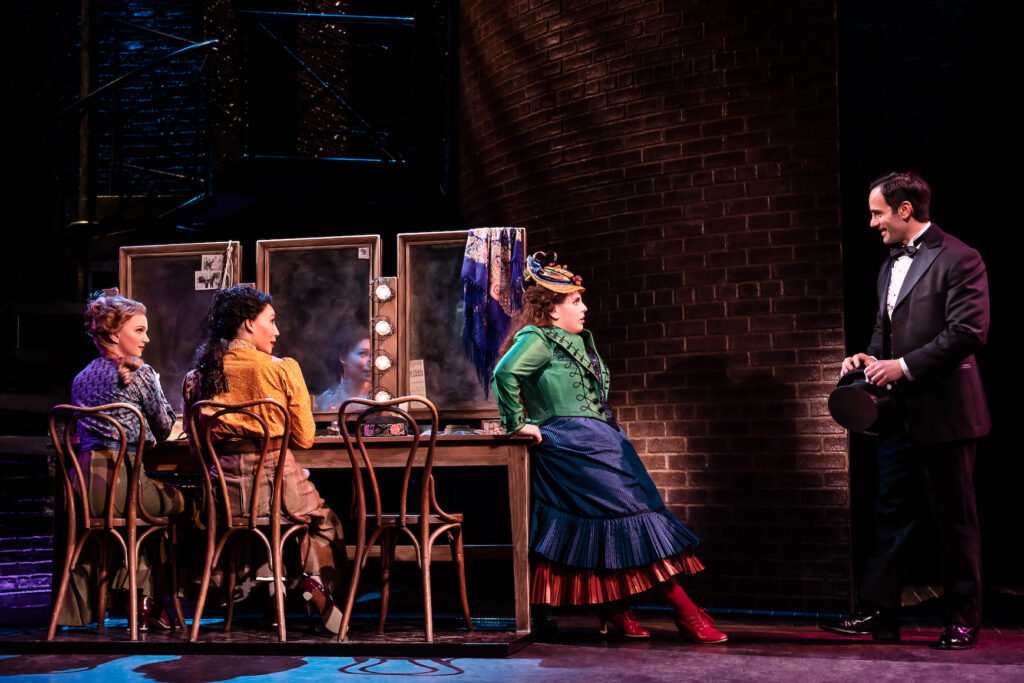

Not having seen Ms. Feldstein, of course, I can’t compare the performances other than in my imagination, but I can verify that Ms. Benko is rendering a star-making performance with a voice that—even if not quite Streisandian—gives those classic songs everything they need in intensity, power, poignancy, musicality, and, when required, humor. Anyone familiar with the great Brooklyn diva’s renditions of “I’m the Greatest Star,” “Cornet Man,” “People,” “Don’t Rain on My Parade,” “Sadie, Sadie,” and “The Music That Makes Me Dance” should rest assured that, if they see that slip of paper, they’re in for something memorable.
The slender, diminutive Ms. Benko, who comes from Fairfield County, Connecticut, is nothing like Ms. Feldstein; she’s perhaps even too cute to be the subject of “If a Girl Isn’t Pretty,” with its lyric asking if “a nose with deviation / is a crime against the nation.”Unlike Ms. Feldstein, she seems closer to the lyric that runs, “When a girl’s incidentals / Are no bigger than two lentils.”
Lentils, shmentils, she sings like an angel, acts with deep sincerity, and is in complete command of Fanny’s Yiddish inflections and expressions, some sounding uncannily like those of the original. My biggest problem with Funny Girl’s Fanny Brice, however, is not who plays her, but the script’s failure to clearly demonstrate her comic genius. She could sing—if not on the level this show demands—but that’s not why she’s remembered. Brice’s enormous popularity stemmed from her zany antics and comic voices; I still recall laughing at her “Baby Snooks” shows on the radio in the 1940s. Of course, I was a baby myself, so what did I know?
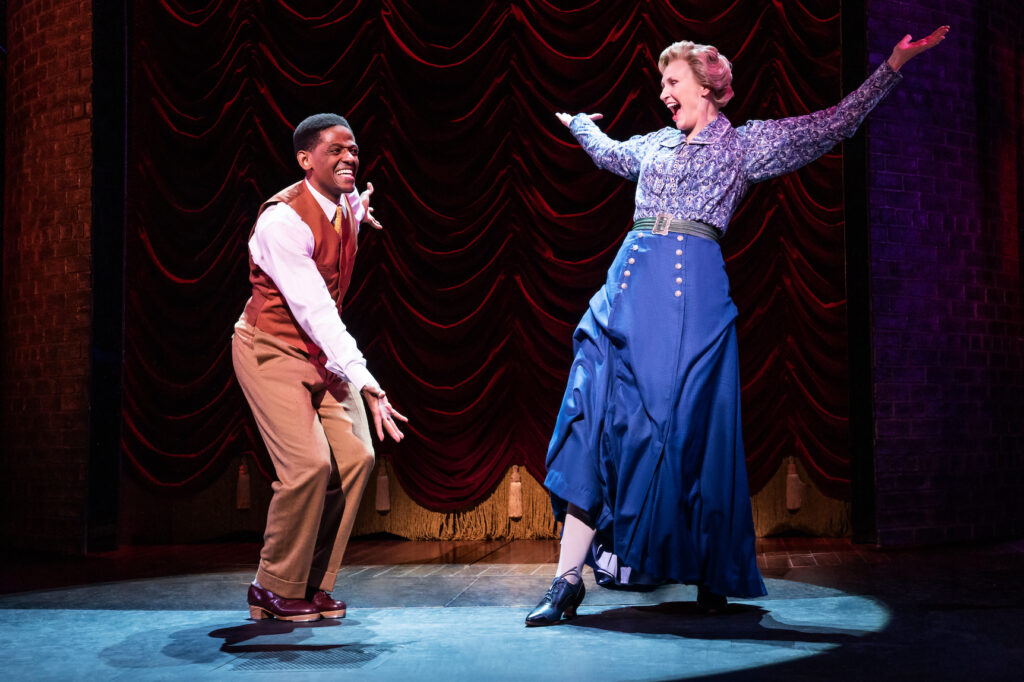

The show offers two big Ziegfeld Follies-style farcical routines with the ensemble, neither hysterical enough. In “His Love Makes Me Beautiful,” Fanny wields a bride’s pregnant belly like a battering ram, and in “Rat-Tat-Tat-Tat” she clowns as a Jewish military recruit with bagels on her belt instead of grenades. But we need more, and droller, Briceian shtick if we’re to appreciate why the show is called Funny Girl, not Singing Girl.
You may have heard that many critics consider this a mediocre revival. Of the handful of musical revivals eligible for a Tony nomination, only three were chosen, and Funny Girl, despite having the same director and Fierstein book as the London version, was snubbed. It’s hard not to think that dissatisfaction with the casting, rather than the production itself, motivated its failure to garner more than the single Tony nod given to the talented Jared Grimes in his featured role as Eddie Ryan. I can’t prove my feeling is valid, of course, but the show is certainly deserving of wider awards appreciation than it’s received, and not only from the Tonys.
It’s true, nevertheless, that the revised book—like the original—is flabby, way overlong at two hours and 50 minutes, not particularly informative, and much less funny than it should be. In fact, much of it, when it focuses on Fanny’s eagerness to cough up money to cover Nick’s shady business, is darkly unfunny. Moreover, its narrative moves through the years making little attempt to note just what those years are. And there’s that aforementioned problem of underplaying just what made Fanny Brice beloved.
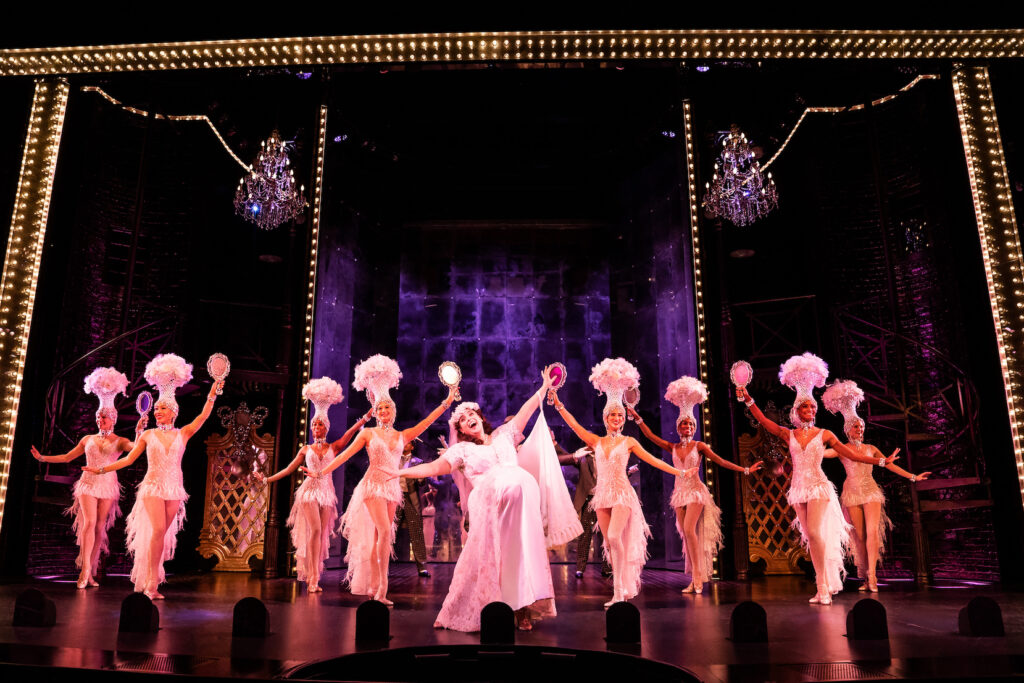

Jane Lynch (from TV’s “Glee”) as Fanny’s mother gives a smart, enjoyable performance and sings quite well, but seems oddly out of place as an early twentieth-century, Lower East Side, Jewish momma. As song and dance man (and, man, can he dance) Eddie Ryan, tap genius Jared Grimes, who is African American, raises distracting questions when the show suggests the possibility of a romantic relationship with Fanny way back in the 1910s. And Peter Francis James makes Florenz Ziegfeld little more than a well-groomed department store mannequin.
Mr. Karimloo as the slick Nick Arnstein, Fanny’s gambler husband, pairs beautifully with Ms. Benko, singing gloriously and looking as “gawjus” as everyone says he is. Future Nicks had better consider doing sit-ups if they’re going to compete with his impressive six-pack. Playing a macho smoothie whose self-esteem is damaged by his infatuated wife’s willingness to cover his financial losses, Mr. Karimloo brings substantial sympathy to a character who could easily be seen as a heel.
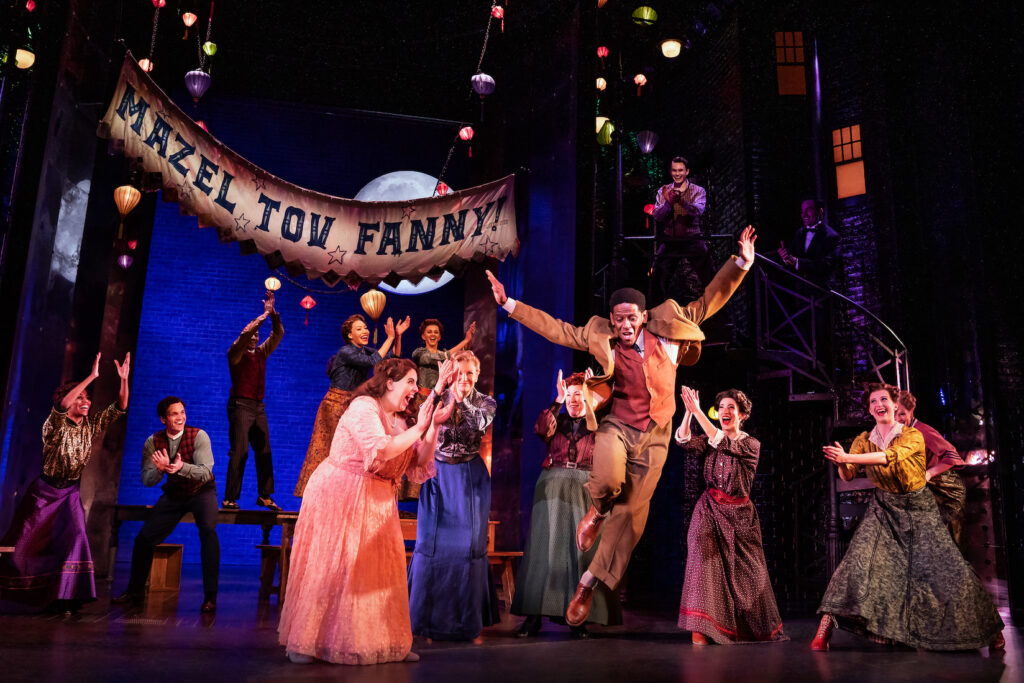

Mr. Mayer’s sprightly staging, supplemented by Ellenore Scott’s lively choreography and Ayodele Casel’s dazzling tap creations, provides plenty of colorful activity to gaze at, especially during the Ziegfeld Follies numbers. Susan Hilferty captures the period look in her scrumptious costumes, especially the Ziegfeld routines, like the one in which the stunning showgirls wear huge floral headdresses. David Zinn’s set is dominated by an ugly, brick-faced, silo-like structure with windows in it, suggesting part of a cityscape; however, when it opens down the middle, it reveals, with the help of a turntable, some rather striking images, among them Fanny’s luxurious Long Island home, with towering windows from floor to rafters, lit beautifully by Kevin Adams.
Future discussions of this Funny Girl will be unable to ignore the elephant in the room: would its fate have been seriously altered by a different casting decision? We’ll never know, but, for what it’s worth, I hereby offer my imaginary Tony nomination of Julie Benko as Best (Standby) Actress in a Musical.
Funny Girl. Open run at the August Wilson Theatre (245 West 52nd Street, between Seventh and Eighth Avenues). www.funnygirlonbroadway.com
Photos: Matthew Murphy


